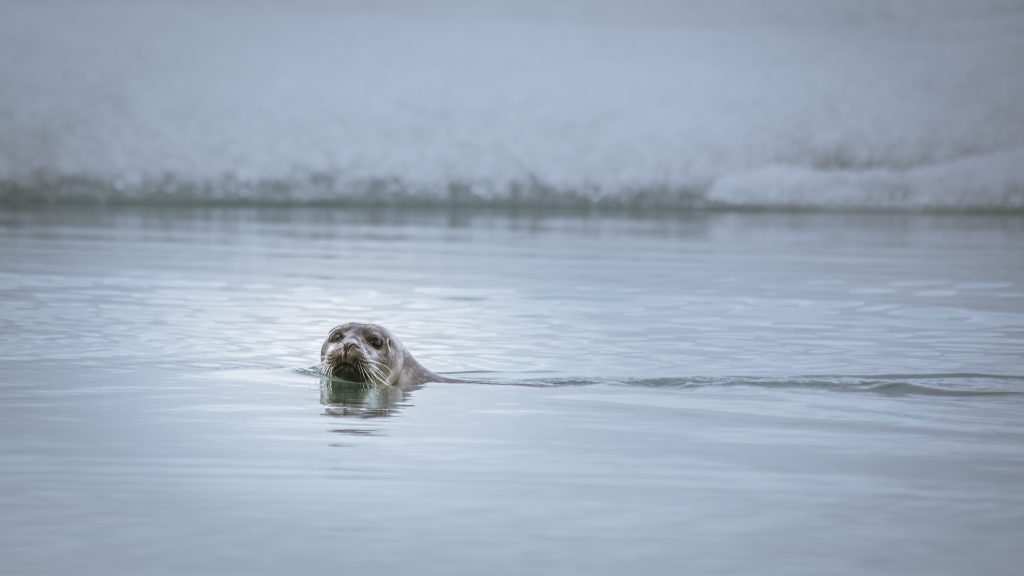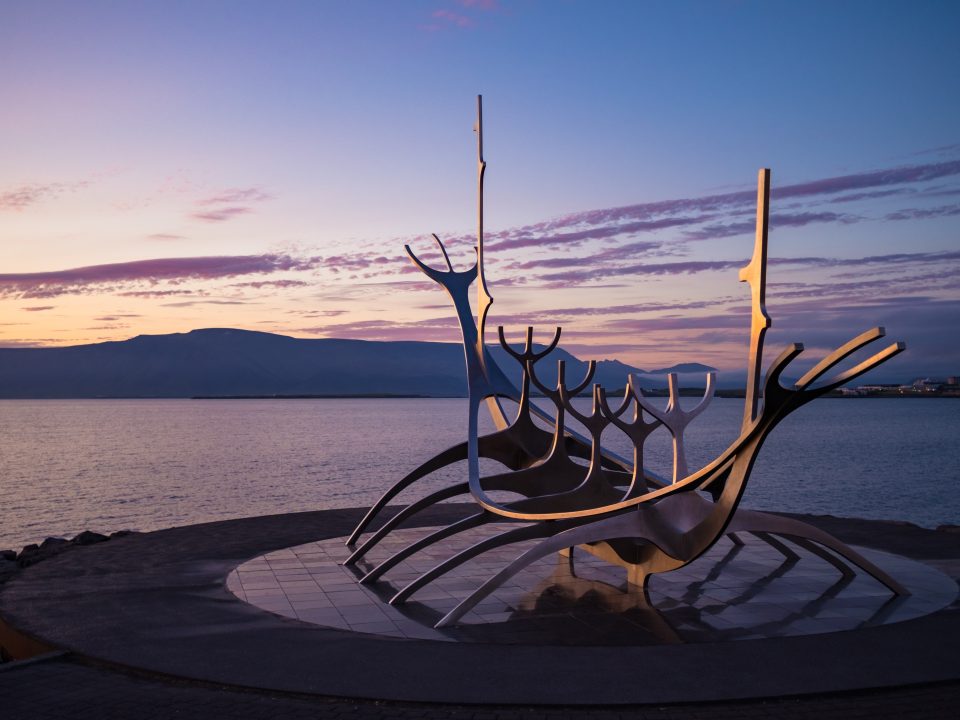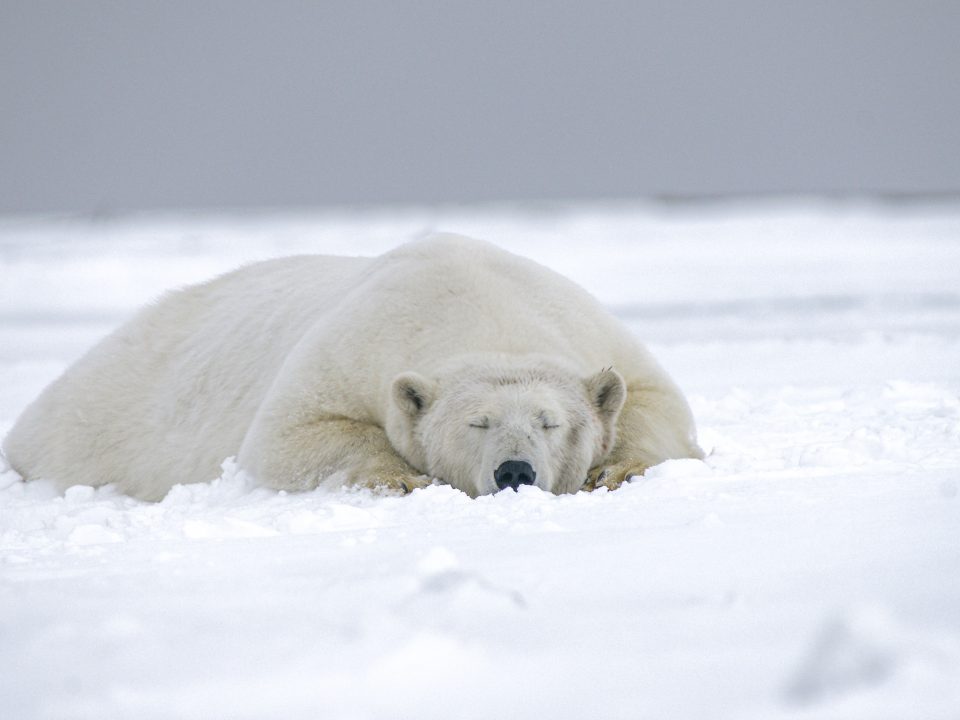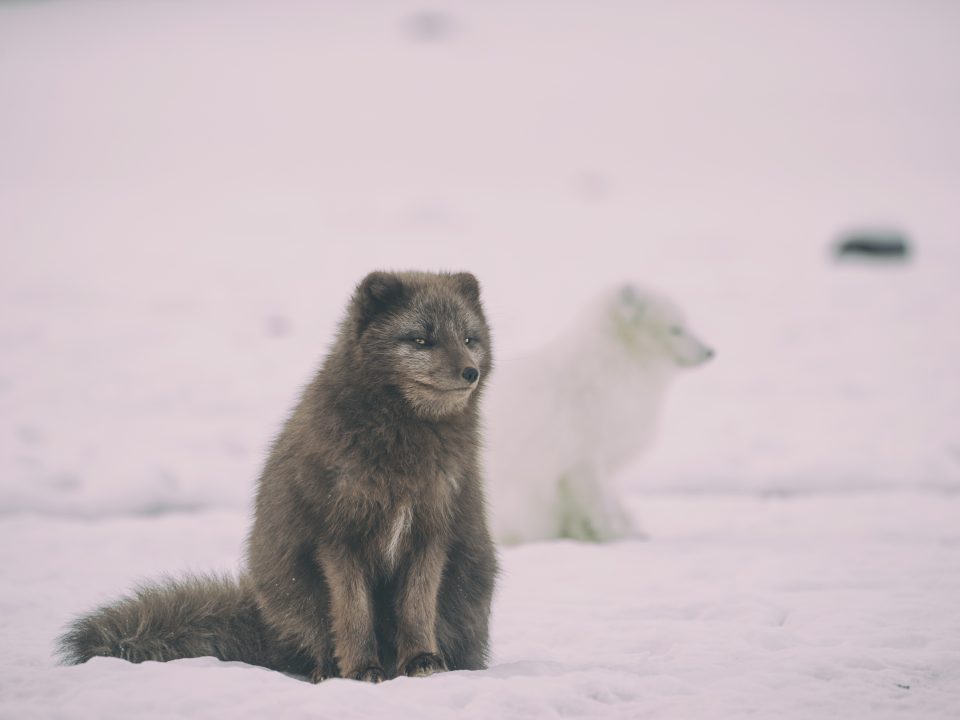SEALS IN ICELAND

SOLHEIMASANDUR PLANE WRECK
November 5, 2021
WHAT TO PACK TO COME ICELAND
November 19, 2021Iceland is the home for many creatures including the famous dog of the seas: seals. These lovely creatures can be found across the country in different spots throughout the year. In this article we will introduce you to this cute animal chilling on the Icelandic shore.
Hunt
In Iceland, for survival reasons, seals have been hunted and used for their skin, meat and blubber providing invaluable fuel for decades. However, across the centuries, with the progress of our society, it became less necessary for survival to hunt down seals. Hence, the hunt decreased a lot until the 60s, when the fashion industry brought back the hunting to make coats out of seal fur. About 6000 seals had been killed each year during this decade only for fashion. In the 70s, the conservationist movement put this trend at decline but in the 80s, in order to reduce the impact of seals on the fishing industry, the government put ‘bounty’ on seals. The fishing industry in Iceland being the most important industry of the country with tourism, the seals are considered a threat for the fishing industry as they carry a ringworm that they can pass onto fish and greys seals tend to bite fish across the nets in the liver, spoiling the whole nets and causing damage to the materiel.
Nowadays, seals are still hunted but way less than before and since 2019, the seals present in Reykjavik and surroundings are protected. However, the danger for the population is the fishing nets in which they get caught quite often and drown in it. From 2014 to 2018, it has been estimated an amount of 2695 seals caught in the nets each year.
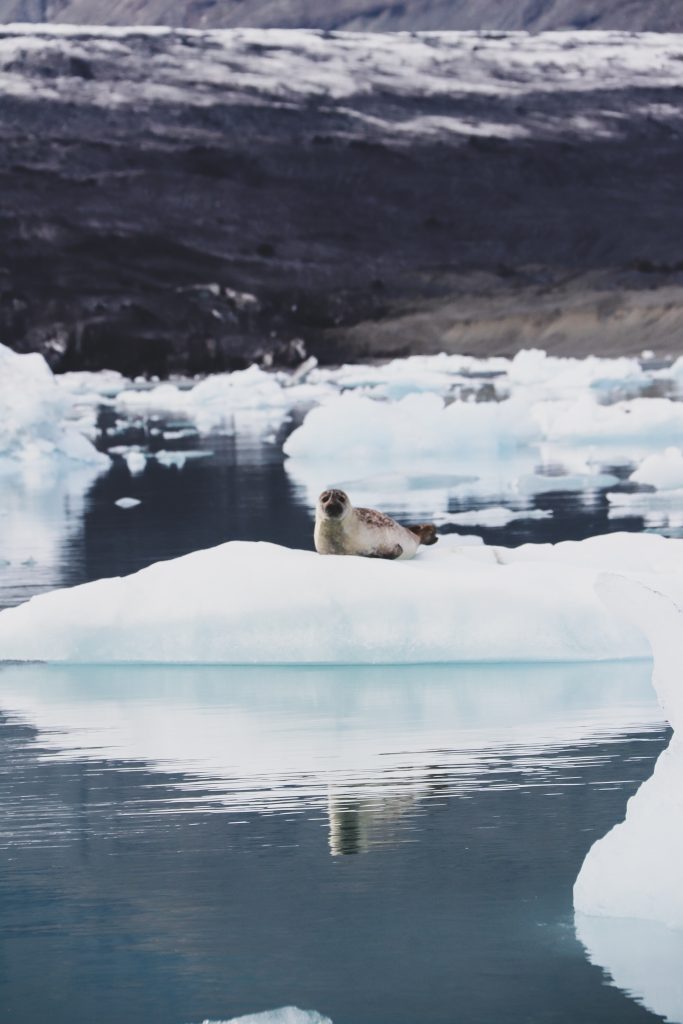
Types of seals in Iceland
There are mainly two types of seals you will find in Iceland: the harbour seal and the grey seal. They are having their babies here, in Iceland. However, you can occasionally see four other species coming down from the Arctic: the harp seal, the bearded seal, the hooded seal, and the ringed seal. On extremely rare occasions you can see Walruses.
Harbour seal
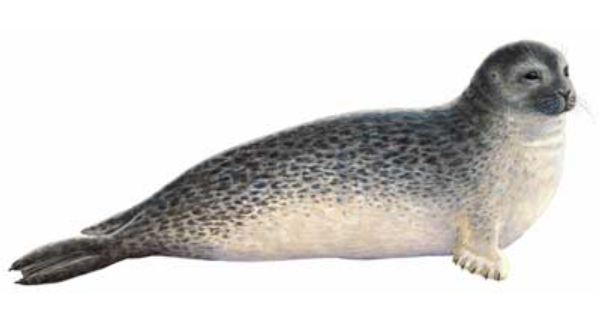
- most common seal in Iceland.
- up to 2 meters long
- weigh up to 100kg
- give birth in June
- live in a colony which they stick to the same colony their whole life
- recently been defined as critically endangered in Icelandic waters by the Icelandic Institute of Natural History
Grey seal
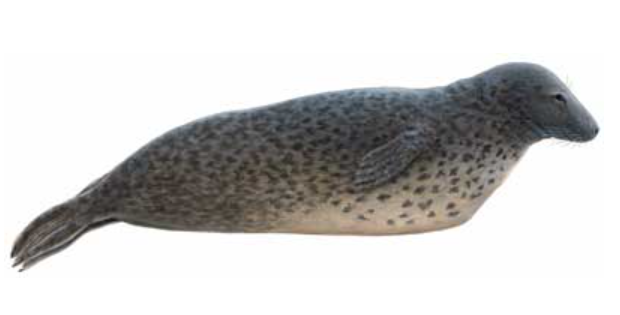
- up to 2.5 meters long
- weigh up to 300kg
- give birth between September and November
- goes to the Skerries, in Irlande from March to May
- population declined dramatically since the 90s from 13000 to 6000
Seals and the Icelandic folklore
In the Icelandic folklore, there is the tale of the Seal’s skin, telling that a fisherman found a cave full of luxurious seal-skins and discreetly stole one of the skins that he locked in a chest at his home. When he came back to the cave, he discovered a beautiful woman crying. He gave her clothes and brought her to his house. She then fell in love with him and they had seven children together. The fisherman kept the chest secret and hid the key in his pocket everyday except one day. On Christmas, he went to a party and left his wife at home as she was too sick to join. However, he forgot the key behind and when he came back home, the chest was wide open and his wife and the seal skin were gone. After that day, he never saw his wife ever again but everytime he went fishing he would be joined by a lone seal, with eyes that always seemed to be filled with tears, circling around his boat and pushing fishes into his net. Also, when their children would walk along the seaside, they would see that same seal swimming next to them, tossing them nice shells. Before their mom disappeared, the last memory her children had from her were those words she whispered to them : ‘Where have I to flee? I have seven kids on land, and seven pups in the sea’.
This tale is maybe the reason why Icelanders always had a strange appreciation for the charm and beauty of seals even though they used to hunt them to survive.
This tale is not just an Icelandic tale, you can find more stories about Selkies, skin shedding seals, in the Faroe Islands, but also into Irish, Welsh and British folklore.
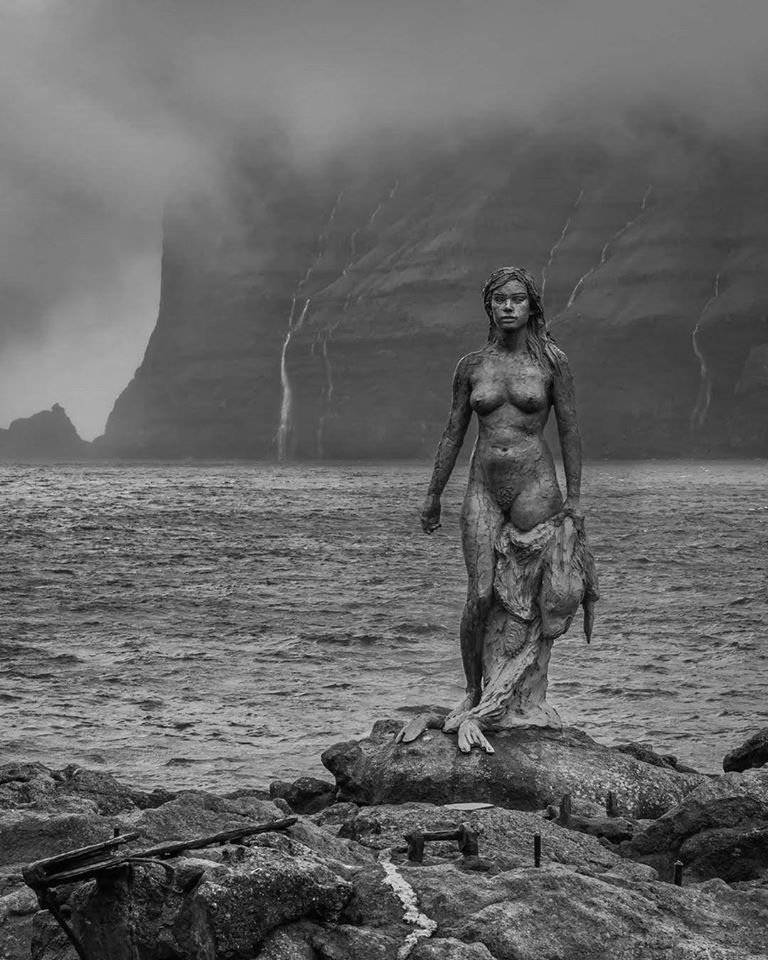
Statue of the legend of Kópakonan in the village of Mikladalur, in the island of Kalsoy, Faroe Islands.
Where to see seals?
There are different spots where you can see seals from land but you can also see them if you go kayaking around Iceland, as they are curious creatures, they might come swimming next to you. It can also happen to encounter them when scuba diving in the Westfjords. The best moment to catch them chilling on the sand or rocks is within two hours of low tide.
South – Jokulsarlon
Yes, seals can also stay in clear water, not just into the ocean. You can see them in the Glacier Lagoon, playing around, hunting, passing from the Glacier Lagoon to the ocean back and forth. And the good news for you, is that you almost get the chance to see them every time. They are visible from the shore around the Glacier Lagoon and from the Diamond Beach.
Snaefellsnes – Ytri-Tunga
This beautiful peninsula that inspired Jules Verne for his novel, “Journey to the Center of the Earth” is full of secrets and mysteries. When traveling in this mystical peninsula, you should definitely stop by the golden colored beach, Ytri-Tunga. There, you can actually see from pretty close many seals resting on the rocks nearby the shore. If you are interested, you can join one of our Spectacular Snaefellsnes Peninsula tours and enjoy this spectacle with your own eyes!
Westfjords – Seals Lookout
When travelling in the Westfjords, on the road between Isafjordur and Reykjanes (in the Westfjords) you will see at some point, by the road, a signal indicating a seal lookout. There is a parking lot where you can park and some spots where to sit and enjoy the view. We would recommend you to maybe take binoculars with you in case they are quite far from the sitting spots.
North – Vatnsnes peninsula
Located between the Westfjords and Akureyri, the Vatnsnes peninsula is the perfect spot to see some seals. There is the Icelandic Seal Center in the town of Hvammstangi, where you can get precious knowledge about those beautiful creatures. If you go further than the town, you will reach a lookout where to observe the seals. On the same peninsula, you can also stop by Hvítserkur, the rhino-like rock on the black sand beach.
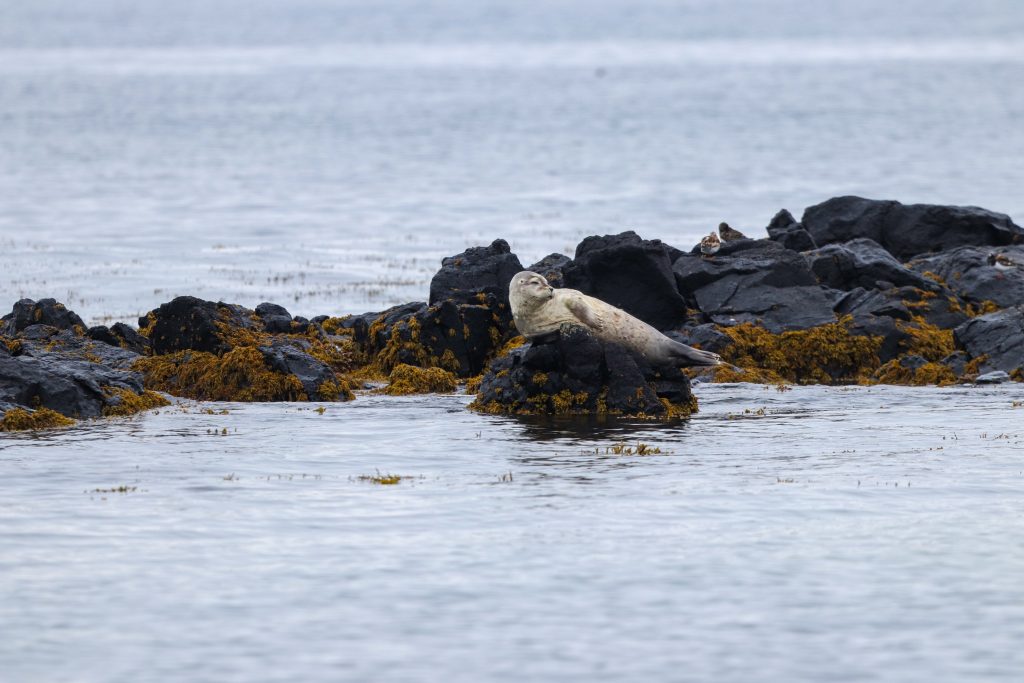
IMPORTANT
Remember to always be careful when approaching seals. They are in their natural habitat, be careful not to disturb them by getting too close, being loud, or abrupt. Also, it is very important that you make sure not to damage their environment, take your trash with you when leaving and make sure not to forget anything behind you.
Seals have been here way longer before humans arrive on the island, and they should always be comfortable in the places they called home. The seal-watching is a growing activity here in Iceland and it should always be practiced in the best conditions for the animals. With the growth of the industry, it could also put an end to the old traditions of hunting.
